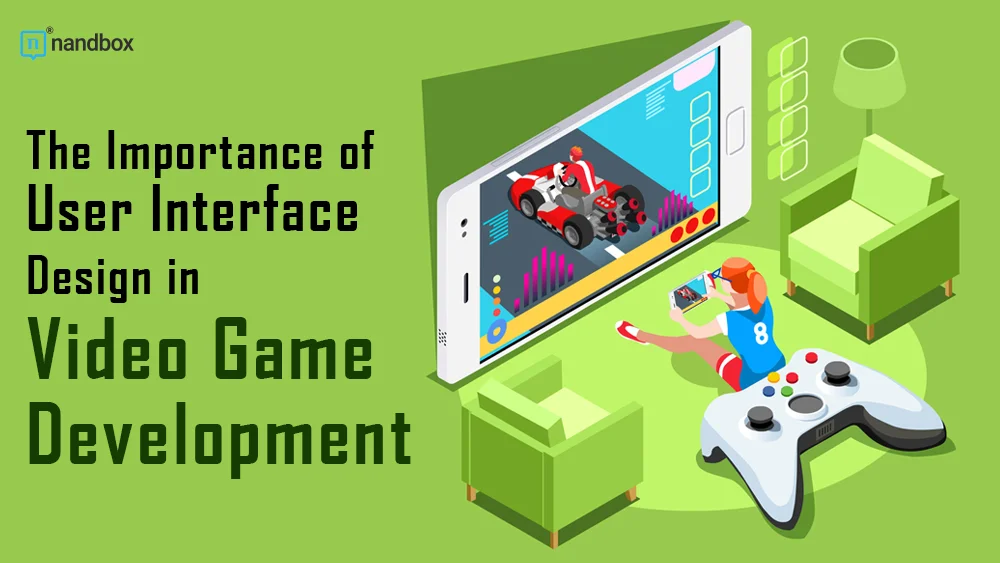Creating an immersive and captivating experience for players is paramount in video game development. While elements such as graphics, gameplay mechanics, and storytelling often take center stage, one aspect that is frequently overlooked but crucial to the overall experience is user interface design in video games. User interface (UI) design encompasses the visual elements, controls, and interaction methods players use to navigate and interact with the game. This article will explore the importance of user interface design in video game development, including its role in creating an immersive experience, leveraging human behavior in game design, designing for accessibility, and the future of video game interaction.
Creating an Immersive Experience
One of the primary functions of user interface design is to create an immersive experience for players. A well-designed UI seamlessly integrates with the game’s visuals and gameplay mechanics, enhancing the overall immersion and making the players feel like they are truly part of the game world.
An effective and user-centric interface should be intuitive and visually appealing, allowing players to easily navigate menus, control their character, and access game information. Elements such as menu layouts, button placement, and font choice can significantly impact the player’s experience. A cluttered or confusing UI can break immersion and disrupt the flow of gameplay, while a well-designed UI can enhance the game’s storytelling and provide a seamless experience.
Leveraging Human Behavior in Game Design
User interface design in video games goes beyond aesthetics; it also uses human behavior and psychology to increase player engagement and satisfaction. The video game development company studies human behavior explicitly to create user interface elements that tap into instincts and cognitive processes, making the game more engaging and easy to understand.
For example, UI elements that mimic real-world objects or behaviors, such as a virtual map or inventory system, can make players feel more familiar and comfortable. Similarly, visual cues, animations, and Sound effects generated by tools like Sound Buttons Lab offer immediate feedback, enabling players to associate certain sounds with actions or outcomes within the game. Designing the user interface with an understanding of human behavior can help create a more intuitive and immersive experience. By tapping into players’ instincts and cognitive processes, the UI can enhance engagement and make the game more enjoyable.
Designing for Accessibility
Inclusive design is a crucial aspect of user interface design in video games. Accessibility in gaming refers to creating usable and enjoyable interfaces for players with disabilities or limitations. Designing for accessibility ensures that all players can participate and enjoy the game and presents an opportunity for game developers to tap into a broader market.
Accessible user interface design can encompass various elements, such as customizable controls, subtitles or captions for hearing-impaired players, colorblind-friendly visuals, video size, and different difficulty levels or assistance options. These considerations make the game more accessible to players with a wide range of abilities, fostering inclusivity and improving the overall player experience.
The Future of Video Game Interaction
As technology advances, how we interact with video games also evolves. User interface design is poised to play a significant role in shaping the future of video game interaction.
One exciting development is the rise of virtual reality (VR) and augmented reality (AR) gaming. VR and AR technologies offer new possibilities for user interface design, such as gesture-based controls, immersive menus, and virtual overlays. These advancements can potentially revolutionize how players interact with games, creating even more immersive and engaging experiences.
Another trend that is gaining traction is the integration of voice and gesture recognition into user interfaces. As devices become more capable of understanding and responding to voice commands and gestures, game developers can explore new ways for players to interact with the game world, reducing reliance on traditional button-based controls. This opens doors for more intuitive and natural interactions, expanding the possibilities for gameplay and immersion.
Conclusion
User interface design is critical to video game development, often shaping the player’s overall experience and immersion. A well-designed UI creates an immersive environment, leverages human behavior and psychology to enhance engagement, and ensures accessibility for all players. As technology advances, the future of video game interaction holds exciting possibilities for user interface design, with technologies like VR, AR, and voice/gesture recognition paving the way for more immersive and intuitive gameplay. Game developers must recognize the importance of user interface design and continue to innovate in this aspect to create truly immersive, engaging, and inclusive gaming experiences.




